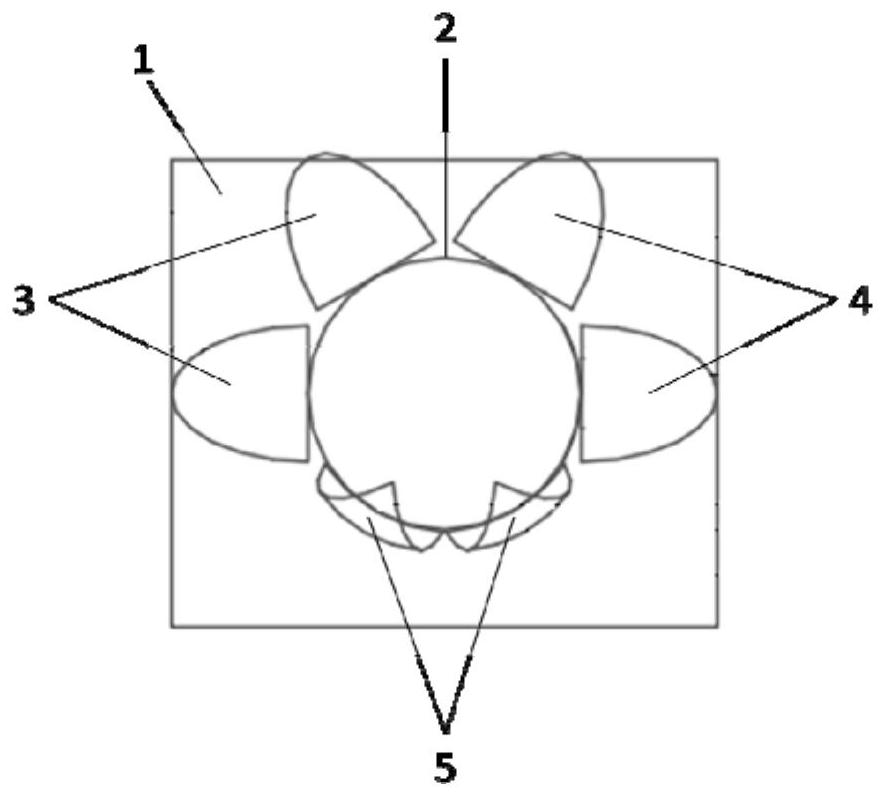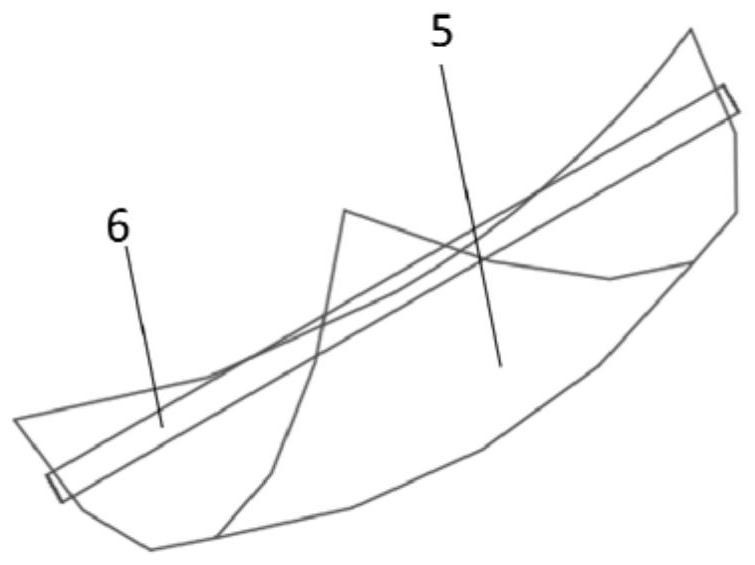A variable building skin system based on light sensing
A light-sensing and architectural technology, applied in the direction of sustainable buildings, buildings, building components, etc., can solve the problems of reflective plate installation area and reflective area limitation, complex and changeable forms, and high reflected light intensity, so as to change the quality of light environment , avoid light pollution, reduce the effect of building load
- Summary
- Abstract
- Description
- Claims
- Application Information
AI Technical Summary
Problems solved by technology
Method used
Image
Examples
Embodiment 1
[0038] Such as figure 1 A variable building skin system based on light sensing is shown in the application such as Figure 4 and Figure 5A south-facing room is shown, installed on the south wall in close-packed form. Assume that the people in the room sit on both sides of the desk 8 . The illuminance sensor 7 is installed on both sides of the desk 8, at a position of 1.35m from the ground (i.e. the normal sitting height of a person), to prevent direct light from entering the field of view of the personnel sitting on both sides of the desk 8.
[0039] The first light-shielding component 3 , the second light-shielding component 4 and the light-reflecting unit 5 are formed by dividing a hemispherical surface into six parts by cutting a cake through its apex. Such as figure 2 The shown reflective unit 5 is driven by the turning shaft in the tangential direction of the arc at the midpoint of the bottom arc. Such as image 3 As shown, the first shading assembly 3, the second...
Embodiment 2
[0050] A variable building skin system based on light sensing, the system includes a wall 1, a circular window 2 arranged on the wall 1, and a shading unit and a reflective unit 5 respectively flipped on the wall 1. The shading unit is located at On the upper edge of the circular window 2, the reflective unit 5 is located on the lower edge of the circular window 2. The shading unit can not only block direct light, but also control the amount of light entering the room by adjusting the inclination angle of the shading unit. The reflective unit 5 is used to increase the amount of light entering the room. Adjust the inclination angle of the shading unit and reflective unit 5 as needed to increase indoor natural lighting . The light sensing unit is arranged in different areas of the room according to the needs, monitors the lighting effect of the area, provides real-time feedback, and adjusts the inclination angle of the shading unit and the reflective unit 5 located at different ...
PUM
 Login to View More
Login to View More Abstract
Description
Claims
Application Information
 Login to View More
Login to View More - R&D
- Intellectual Property
- Life Sciences
- Materials
- Tech Scout
- Unparalleled Data Quality
- Higher Quality Content
- 60% Fewer Hallucinations
Browse by: Latest US Patents, China's latest patents, Technical Efficacy Thesaurus, Application Domain, Technology Topic, Popular Technical Reports.
© 2025 PatSnap. All rights reserved.Legal|Privacy policy|Modern Slavery Act Transparency Statement|Sitemap|About US| Contact US: help@patsnap.com



